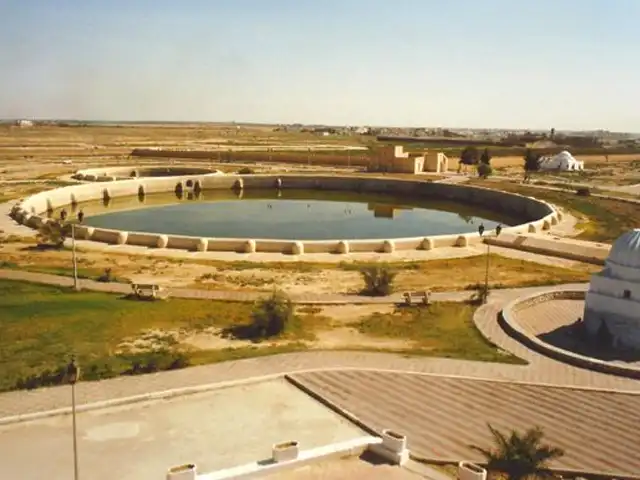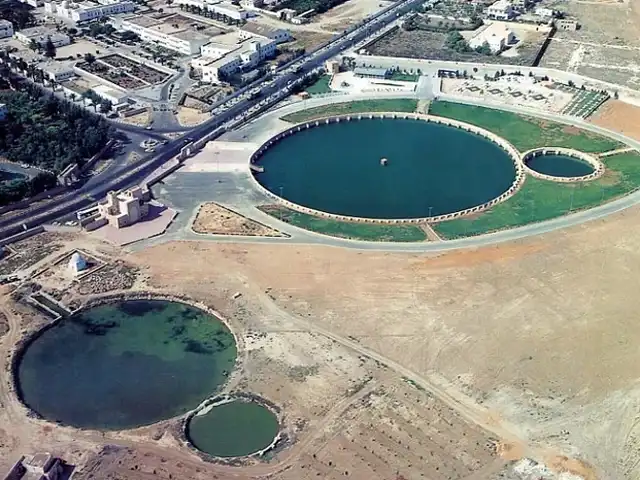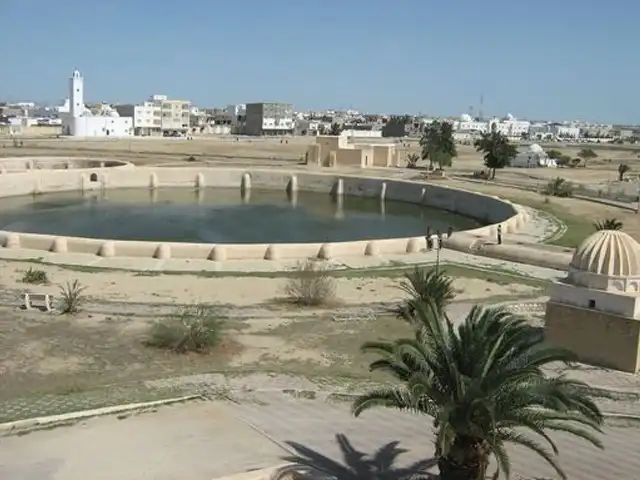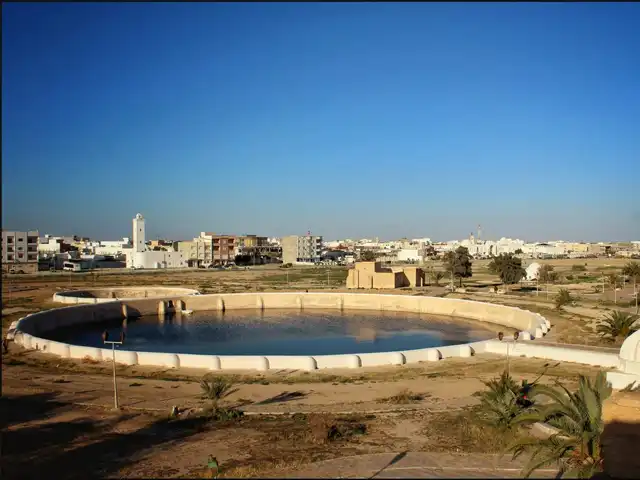The Aghlabid Basins of Kairouan
The Aghlabid Basins of Kairouan stand as a monumental testament to the ingenuity and grandeur of ancient hydraulic architecture. Nestled just outside the fortified walls of Kairouan, these extraordinary water reservoirs, built in the 9th century, reflect the vision of the Aghlabid dynasty at its height. Their construction, initiated around 860 AD under the reign of the Emir Abu Ibrahim Ahmed, was designed to sustain the city’s growing population with a reliable and sophisticated water supply system.
What makes these basins so exceptional is not just their impressive size, but the intricate engineering behind them. Originally, the water was collected from rain and tributaries, using an elaborate system of small dams and channels. Later, an aqueduct stretching 40 kilometers from the Cherichira springs further enhanced their supply. Covering an area of over 11,000 square meters, the basins consist of a large storage reservoir, a smaller settling basin, and multiple cisterns, together capable of holding an astonishing 68,800 cubic meters of water.
The larger of the two basins is particularly striking, with its polygonal form and robust buttresses designed to withstand immense water pressure. The delicate balance between functionality and aesthetic grace is evident, with a central pillar once crowned by a kiosk, offering an element of refinement and beauty amid the practical design. During the Aghlabid era, these basins were more than mere reservoirs; they were also an oasis of leisure for the ruling elite, a place where the practical met the poetic.
Today, the Aghlabid Basins remain a symbol of Kairouan’s rich historical heritage, an enduring marvel that continues to fascinate visitors with its blend of architectural mastery and timeless beauty. Standing by their tranquil waters, one cannot help but feel transported to a bygone era where innovation met artistry in the heart of the ancient Muslim world.
The Aghlabid basins in pictures





